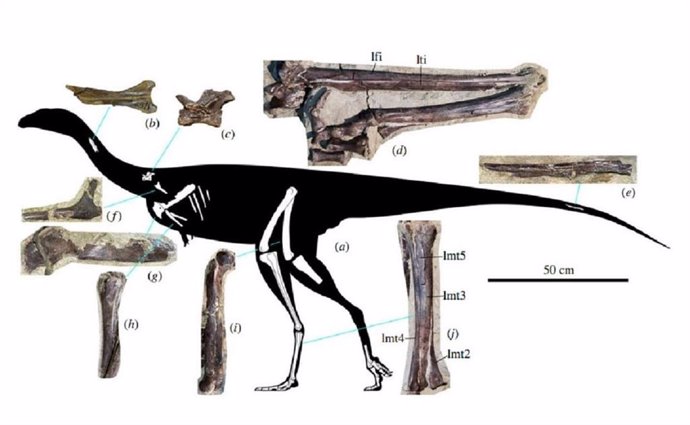Reconstruction of the species Kiyacursor longipes with skeletal fragments found in the locality of Shestakovo – PROCEEDINGS OF THE ROYAL SOCIETY B
May 28. () –
Russian paleontologists have described a new species and genus of ceratosaur, or horned lizard, a group of predatory dinosaurs that They separated early from the common evolutionary trunk.
As the discoverers point out, Its success was possible thanks to the great diversity: ceratosaurs were represented by both small individuals (1-1.5 meters in length) and very large individuals (10-11 meters).
In the process of evolution, ceratosaurs experienced a reduction, that is, a decrease in limbs. Thus, even large dinosaurs of this species had very small front legs and their muscles, contrary to expectations, were well developed. The ceratosaurs were widespread in the Jurassic (145-200 million years ago) and Cretaceous (66-145 million years ago) periods, Their remains are found on almost all continents. During the Cretaceous period, ceratosaurs lived mainly on the southern continents and were believed to have become extinct in Asia at the end of the Jurassic period.
The discovery of kiyacursor (from Latin “Kiya River Corridor”) by Russian paleontologists has become the first evidence of the habitat of Cretaceous ceratosaurs in Asia.
“We describe a new genus and species of dinosaur based on a fragment of an animal skeleton, including the cervical vertebrae, humerus and girdle of the forelimbs, as well as the bones of the hind limbs in the anatomical joint. This fragmentary skeleton was discovered on the banks of the Kiya River, in the town of Shestakovo, dating back to the Early Cretaceous period,” explains it’s a statement Pavel Skuchas, head of the Department of Vertebrate Zoology at St. Petersburg State University.
It is noteworthy that the scientists did not extract the bones found from a piece of rock; to study them, a CT scan was performed. Histological analysis of the bone tissue showed that the skeleton belonged to a young and still growing animal.
WITH OSTRICH LEGS
The new genus belongs to the noasaurids: small, elegant and fast ceratosaurs. Paleontologists at St. Petersburg University confirmed that the new ceratosaur also ran fast. He, like other “runners”, was found to have elongated sections of his hind limbs. Thus, scientists They compare its leg to the leg of an ostrich, a modern and fast predatory dinosaur. Given the new ceratosaur’s ability to run quickly, it was called a kiyacursor, a “runner” from the banks of the Kiya River. The specific name of the cursor is longipes, that is, long-legged.
The remains were found in the so-called Great Siberian Refuge, a vast area of Siberia in which typical Jurassic forms continued to exist in the Early Cretaceous. You could say that it was a “Jurassic Park” in the Cretaceous: In this refuge park Jurassic relics survived that were extinct in many other places, according to the authors.










![[Img #74661]](https://thelatestnews.world/wp-content/uploads/2024/12/The-power-of-ultrasound-150x150.jpg)



![[Img #74661]](https://thelatestnews.world/wp-content/uploads/2024/12/The-power-of-ultrasound-300x200.jpg)

Add Comment